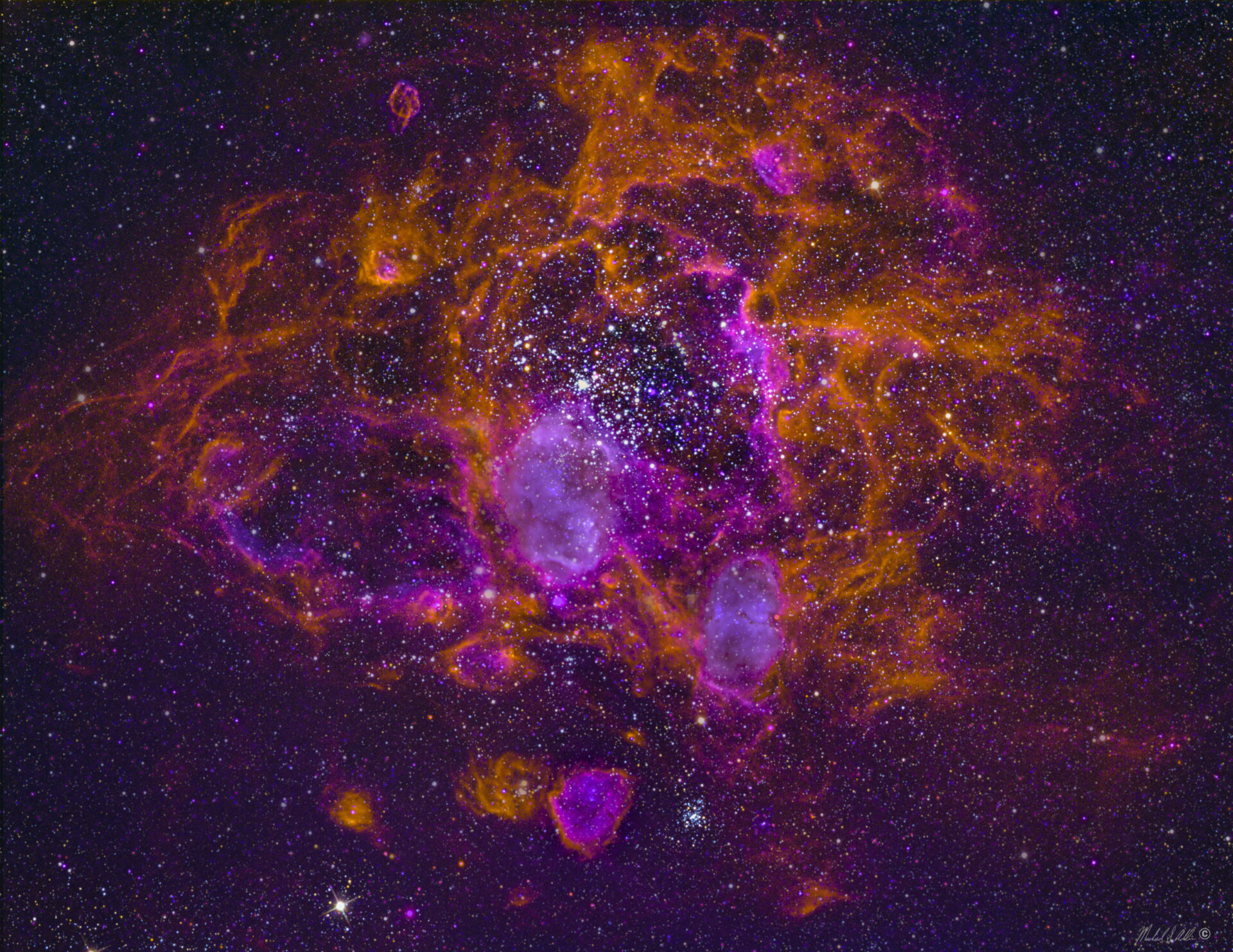Optics: Planewave 17″ CDK17
Mount: Software Bisque Paramount ME
Camera: SBIG STXL 11002
Filters: Astrodon 3nm Ha, Oiii, Siii, LRGB
Dates/Times: October, 2019
Location: Rio Hurtado
Exposure Details: Ha 20x30min,Oiii=38x30min, RGB=3x10min, total 67 images over 30.5 hours
Acquisition: MaxIm DL
Processing: MaxIm DL,Starnet++ Photoshop CC2020, Narrowband with Ha in red, Oiii in blue and RGB added using the screen mode in Photoshop
NGC 1760, Nebula in the Large Magellanic Cloud
Original price was: $65.00.$52.50Current price is: $52.50.
NGC 1760, Nebula in the Large Magellanic Cloud One of the largest nebulas yet detected is actually a complex ring of emission nebulas connected by glowing filaments. The unusual network, known as N11, spans over 1000 light years, 160,000 light years away, and is a prominent structure of the Large Magellanic Cloud, the largest satellite galaxy of our Milky Way. The nebula is about 2/3 of the size of the moon in the sky. To provide a sense of its largeness, if this nebula were the same distance as the Orion nebula(1300 light years) it would span 20 moon diameters in the sky or about halfway from the horizon to the zenith overhead.
In the center of the image is open star cluster LH9, also known as NGC 1760, composed of about 50 bright blue stars that emit radiation that has eroded a hole in their surroundings. A leading hypothesis for the formation of N11 is shells of successive generations of stars being formed further out from the center of the nebula than the last, have created shells of gas and dust. The bright region just below the center is N11b, an explosive domain where stars are being formed even today. In NGC 1760 altogether, three generations of stars can be found. ‘Grandmother’ stars have carved a large superbubble, leading to the birth of the cluster of massive bright blue-white ‘mother’ stars (NGC 1761) in the center. These in turn gives birth to new star ‘babies’ inside the dark globules.
This image is a combination of emission of Hydrogen and Oxygen gas seen through narrowband atomic filters and a true color RGB image. The red in the image is from Hydrogen emission and the blue comes from Oxygen emission.. This combination of the two images provides more detail but also preserves the true color of the stars and is close to the true color of the nebula. The stars were extracted from the true color image using Starnet++ and then attenuated to give more emphasize to the nebula.


